Nutanix On AWS: 5 Key Product Features To Know
Nutanix Tuesday unveiled the availability of Nutanix Clusters on AWS. Here are five key features channel partners and customers need to know.
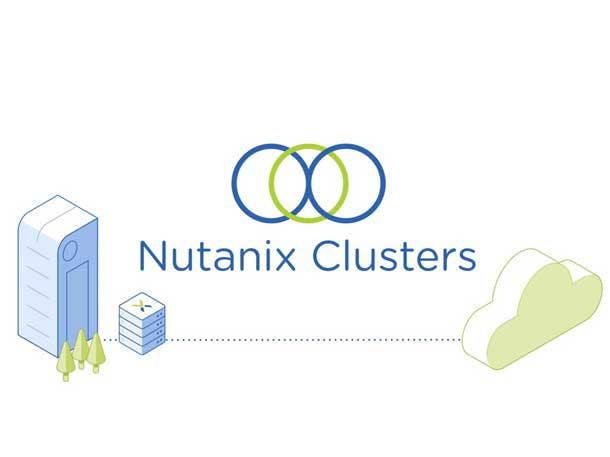
Nutanix Clusters on AWS: What To Know When Buying Or Selling
Nutanix is taking a deeper dive into Amazon Web Services with the Tuesday launch of the general availability of Nutanix Clusters on AWS, which extends Nutanix’s hyperconverged infrastructure software and services to bare-metal Amazon Elastic Compute Cloud (EC2) instances on AWS.
“Clusters on AWS provides customers the flexibility to get the most out of both their AWS and Nutanix environments,” said Doug Yeum, head of worldwide channels and alliances at Seattle-based AWS, in a statement. “Customers now have an opportunity to take advantage of Nutanix Clusters on AWS to deploy adjacent to their cloud-native applications in AWS and fast-track their digital transformation.”
Nutanix Clusters is a hybrid cloud platform that manages applications and infrastructure in both private and public clouds, operated as a single cloud. San Jose, Calif.-based Nutanix recently received the highest score by Forrester analysts for hyperconverged software in its new Forrester Wave: Hyperconverged Infrastructure Q3 2020 report.
Here are five key product features channel partners and customers need to know about Nutanix Clusters on AWS.
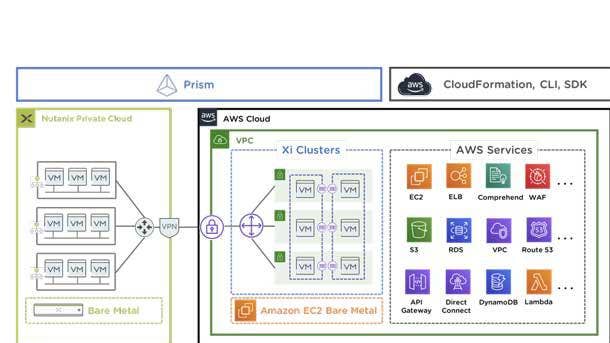
Integrated Networking With AWS
The Nutanix Clusters on AWS offering has built-in networking integration to make it easy to create a hybrid cloud with Nutanix and AWS. Due to this built-in integration with the AWS networking layer, Nutanix Clusters delivers benefits around ease of deployment and performance. The Nutanix-AWS integration eliminates the cost and management complexity of hybrid environments and allows for seamless mobility across private and public clouds without any rearchitecting of the applications.
The networking integration also allows customers to use their existing AWS accounts, including unused credits, virtual private clouds and subnets. Nutanix said this unique integration enables a unified management plane across private and public clouds, while simplifying the customer experience of managing a hybrid cloud environment.
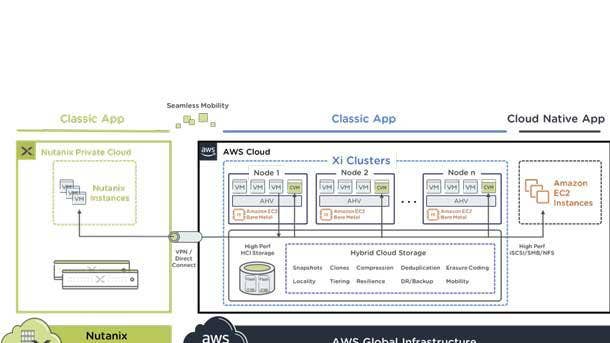
Lift And Shift Apps With Ease
Nutanix Clusters on AWS allows customers to move applications to the cloud as well as consolidate their data centers by a simple “lift and shift” without any changes needed, eliminating the need to re-architect applications. This enables seamless application mobility across multiple clouds.
Nutanix Clusters solves enterprises’ pain points of application and data mobility by providing an easy button to move legacy applications and data to the public cloud. By enabling mobility without needing to rearchitect applications, enterprises can save money and time.
In addition, Nutanix Move—a cross-hypervisor migration offering to migrate virtual machines—provides application mobility between non-Nutanix offerings and Nutanix Clusters to simplify the process.
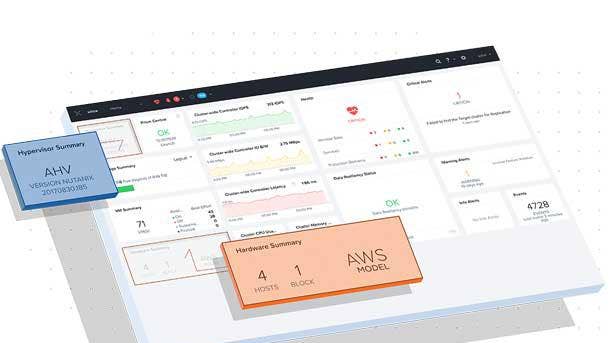
Single Interface
Customers of Nutanix Clusters on AWS can create, manage and orchestrate their infrastructure and applications through a single interface. Nutanix said competitive offerings only offer siloed cloud management, while Clusters can extend its single interface capability across private and public clouds. Nutanix customers can easily extend the full Nutanix stack to AWS.
This single-stack capability eliminates the need for a separate team to manage each environment or for teams to have to learn new skills. A unified offering that provides a consistent experience, tooling and operational practices across clouds will enable companies to break down silos and reduce inefficiencies with the ability to choose the right cloud for each workload, according to Nutanix.
Customers also can scale capacity or expand to different regions in minutes by bursting into public clouds to support seasonal demands and changing priorities. Nutanix said this is especially beneficial when speed is critical, such as when rapidly expanding virtual desktop infrastructure resources amid COVID-19.
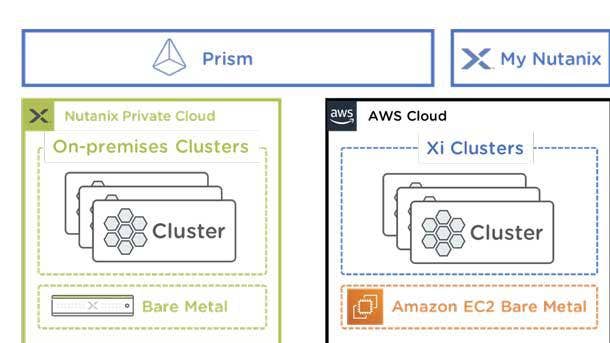
Full Nutanix Stack On AWS
Nutanix Clusters on AWS customers can take advantage of Nutanix’s full software stack on private and public clouds. This includes Nutanix Files, the company’s unstructured storage offering; Nutanix Calm for application orchestration; and Era, the company’s database administration and automation offering.
Nutanix offers a single stack that integrates compute and storage, provides unified operations across private and public clouds, and offers license portability from private to public clouds, which addresses technical and operational challenges when transitioning to a hybrid cloud environment.
Customers also can now leverage AWS for high availability and disaster recovery without adding complexity stemming from managing cloud environments or a stand-alone disaster recovery offering.
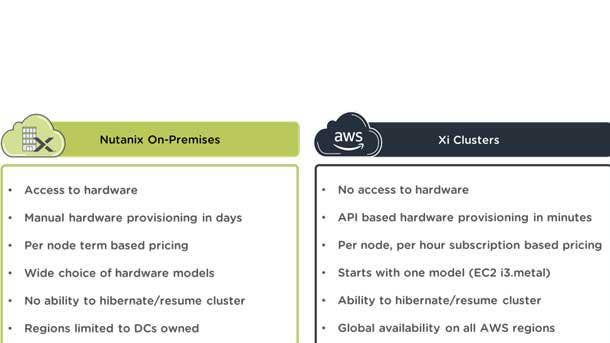
Licensing, Cost Optimization And Availability
Nutanix Clusters on AWS gives customers the choice to either reuse existing on-premises hardware or AWS credits when building out a hybrid environment. Businesses also can choose on-premises licenses or select pay-as-you-go models.
Nutanix Clusters on AWS is currently available to customers in 20 AWS Regions.
Nutanix said customers also can leverage its Xi Beam offering that enables businesses to optimize their cloud investments and increase visibility into their cloud spending without vendor lock-in. Xi Beam is a multi-cloud cost optimization and governance software tool aimed at helping customers reduce cost and enhance cloud security across platforms.
“As the industry evolved, our focus has expanded beyond the data center to help our customers manage the complexity of multiple clouds, whether private or public. Nutanix Clusters on AWS is the realization of this vision,” said Tarkan Maner, chief commercial officer at Nutanix, in a statement. “This enables complete flexibility by allowing businesses to write code once and use it anywhere, taking advantage of scale, location, integration and pricing of multiple options—this is the true vision of hybrid cloud.”